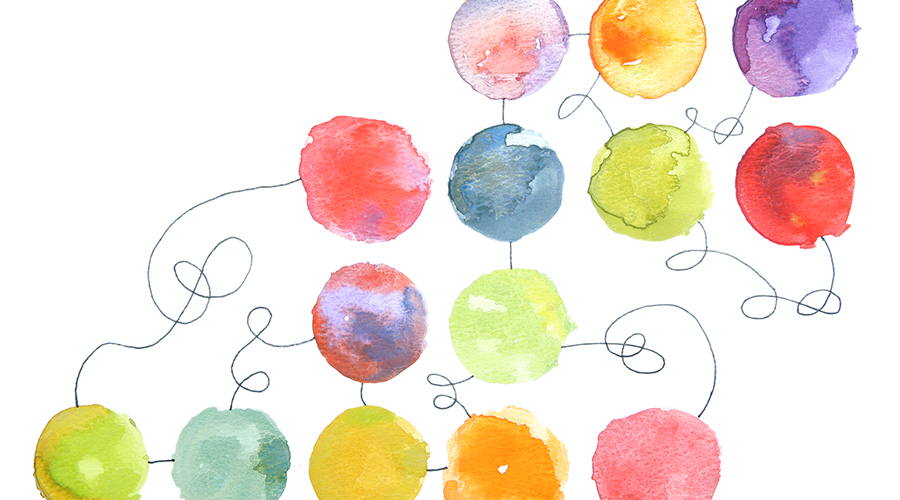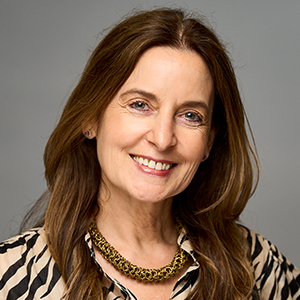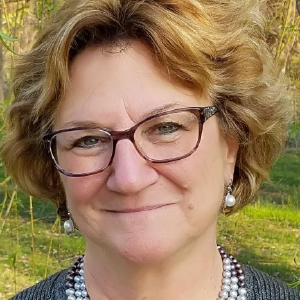
Penn Organizational Dynamics students might not expect to dance in class or keep a color journal as part of their academic journey. Co-instructors Claudia Tordini and Charline Russo will tell you, however, that art-making and expression through art can help students become stronger communicators, interpersonal experts, and workplace leaders. Together, Claudia and Charline teach The Art of Relational Skills and Developing Emotional Intelligence Through Art— two courses that challenge students to experience, firsthand, the value of art and creative expression.
“Both classes are fully experiential and comprised of art-based activities designed to develop a cluster of related skills,” says Claudia, who created the curricula. Claudia is an artist, a leadership coach, and an organizational consultant. She has an MBA from Wharton and a Master of Philosophy in Organizational Dynamics from Penn. The idea for the courses started to take shape while she was completing her capstone for the MPhil. Art, she explains, bridges the gap between the scholarship on interpersonal skills and actual skill development, offering students a different kind of hands-on learning than other program courses.

The relational skills course explores essential elements of communicating with and connecting to others, including creativity, open-mindedness, tolerance to ambiguity and uncertainty, confidence, and empathy. In previous semesters, students have created songs together, written poems with a guest speaker, and designed personalized mixed media projects. The emotional intelligence course develops awareness of self and others, self-management, motivation, relationship management, and the overlapping competency between the two courses—empathy. This past summer, the class spent an entire day at the Barnes Foundation, engaging with the artwork and sharing experiences and perspectives. In another session, a visit with an orchestral conductor addressed leadership, self-management, and creativity. Each skill-focused assignment concludes with group or individual reflection exercises, which provide essential space for students to gain insights from their experiences and further strengthen a skill set.
Claudia and Charline are careful to clarify that these are not courses in art instruction. “We are generating art experiences fit for anybody. Students do not have to have any knowledge of art coming into the classes,” Claudia says. What students will need for class is a bit of bravery and an expectation that they will need to be vulnerable before they can learn. “To be effective, these courses need to be safe environments, encouraging everyone to jump in and participate fully,” she says. “Students can feel very disoriented, particularly at the beginning,” Claudia continues, “but they learn to be confident in their vulnerability and feel strengthened by it. It’s a fantastic experience for them to be put in unexpected situations to relate with art.”
The courses also strip away the structure and restrictions of a traditional classroom to boost creative freedom. Charline explains, “We encourage the students to express themselves, to suspend judgment, and to become comfortable with their vulnerability.”

Charline is a senior lecturer at Penn, holds a doctorate in education in organizational leadership, and has a leadership coaching and consulting practice. She explains that the courses’ creative assignments and reflections awaken students to new communication opportunities, tools, and viewpoints. She has seen her students, as well as her coaching clients, express themselves and their personal and professional challenges through drawings and symbols that tell a story when words cannot. “Art,” she says, “is a different and an additional way to connect,” and connection-making is at the crux of what defines the discipline of organizational dynamics. “Rather than marketing, or finance, or production,” she says, “organizational dynamics is concerned with the people side of work—the connections that drive organizations and the membership within those organizations. A graduate degree in organizational dynamics,” she summarizes, “is like an MBA with heart and soul.”
Art-making as a means to develop emotional intelligence and relational skills is an emerging practice in executive development and coaching professions. Applying these techniques in a graduate curriculum remains novel. Penn is the only university offering these courses, which provides Penn Organizational Dynamics Programs students with a unique opportunity. “Students get a taste of the power of art, and the power of connecting with themselves and others,” Claudia says. After completing the courses, students continue to apply and evolve their connection-making skills as they move forward in their academic and professional careers. “There is no one way of putting these skills into practice, and no endpoint to their development,” Charline says. “Students tend to come to organizational dynamics because they’re looking to do and be something more. These courses offer that sense of awakening and becoming,” she adds.
To learn more about the relational skills course and the student experience, watch Art & Relational Skills: Cultivating an Immersive Virtual Exploration and the DYNM 6590: Art and Relational Skills course description video.



